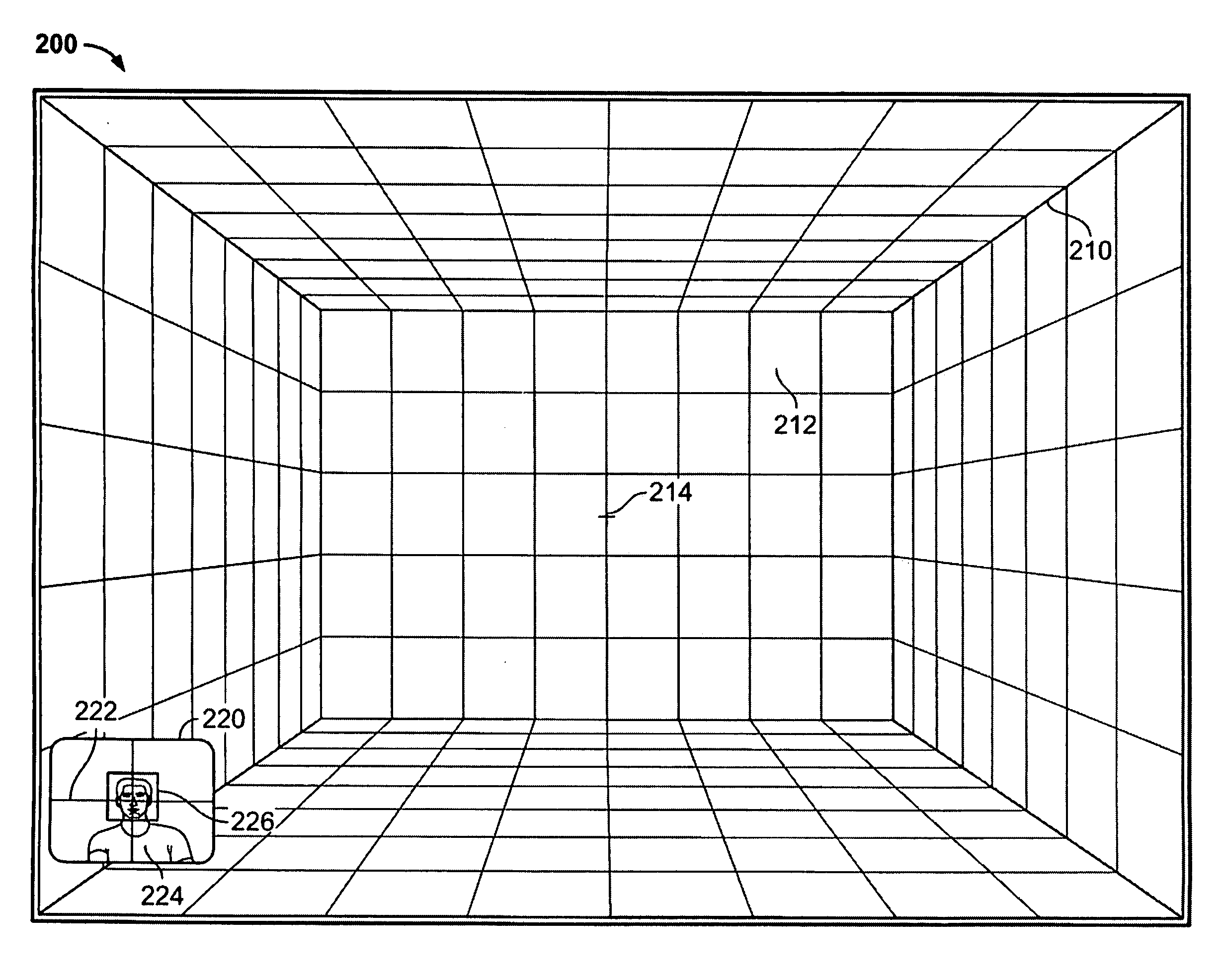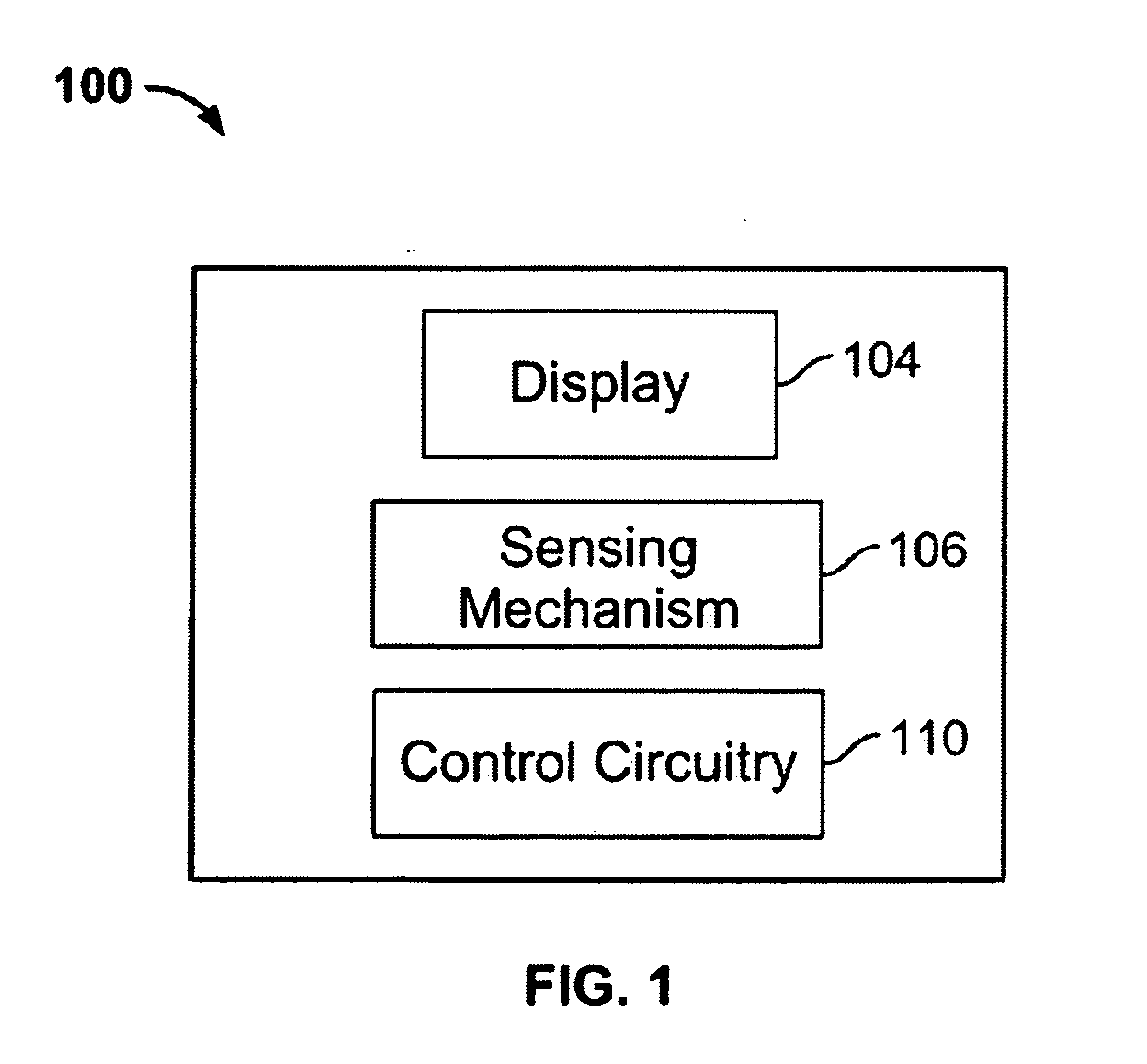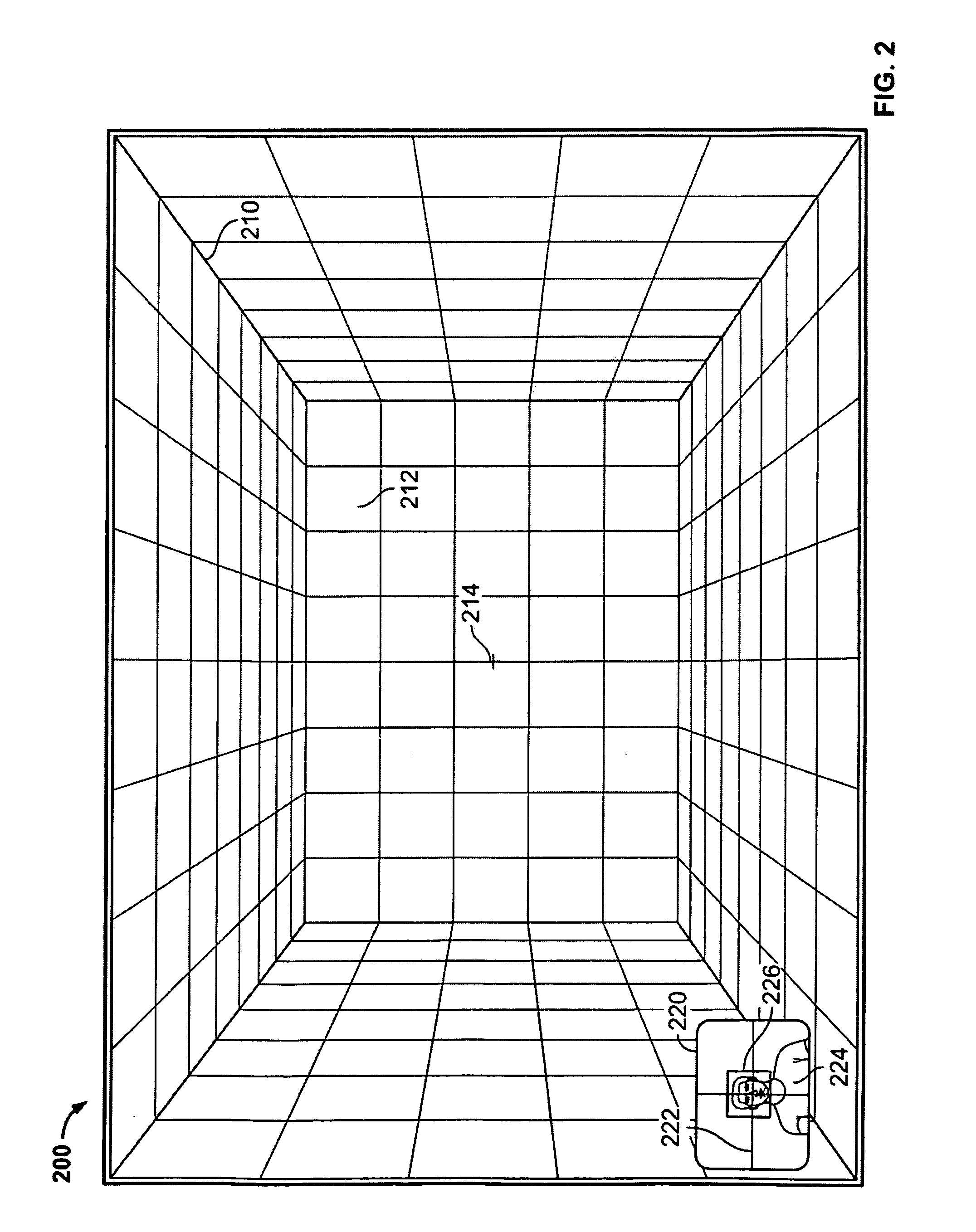Systems and methods for adjusting a display based on the user's position
a technology of display and user position, applied in the field of system and method for adjusting a display based on the user's position, can solve the problems of hardly intuitive, may even be frustrating for new users, and the objects displayed on the electronic device screen may lack realism, so as to achieve accurate assessment of the user's position
- Summary
- Abstract
- Description
- Claims
- Application Information
AI Technical Summary
Benefits of technology
Problems solved by technology
Method used
Image
Examples
Embodiment Construction
[0033]FIG. 1 is a schematic view of a electronic device in accordance with one embodiment of the invention. Electronic device 100 may include display 104, sensing mechanism 106, and control circuitry 110. In some embodiments, electronic device 100 may include other components, including for example, an input mechanism, an audio output component, communications circuitry, a power supply, ports or interfaces for coupling to a host device, a secondary input mechanism (e.g., an ON / OFF switch), or any other suitable component.
[0034]Electronic device 102 may include any suitable device operative to display information to a user. For example, electronic device 102 may include a media player such as an iPod available by Apple Inc., of Cupertino, Calif., a cellular telephone, a personal e-mail or messaging device (e.g., a Blackberry® or a Sidekick®), an iPhone available from Apple Inc., pocket-sized personal computers such as an iPAQ Pocket PC available by Hewlett Packard Inc., of Palo Alto,...
PUM
 Login to View More
Login to View More Abstract
Description
Claims
Application Information
 Login to View More
Login to View More - R&D
- Intellectual Property
- Life Sciences
- Materials
- Tech Scout
- Unparalleled Data Quality
- Higher Quality Content
- 60% Fewer Hallucinations
Browse by: Latest US Patents, China's latest patents, Technical Efficacy Thesaurus, Application Domain, Technology Topic, Popular Technical Reports.
© 2025 PatSnap. All rights reserved.Legal|Privacy policy|Modern Slavery Act Transparency Statement|Sitemap|About US| Contact US: help@patsnap.com



